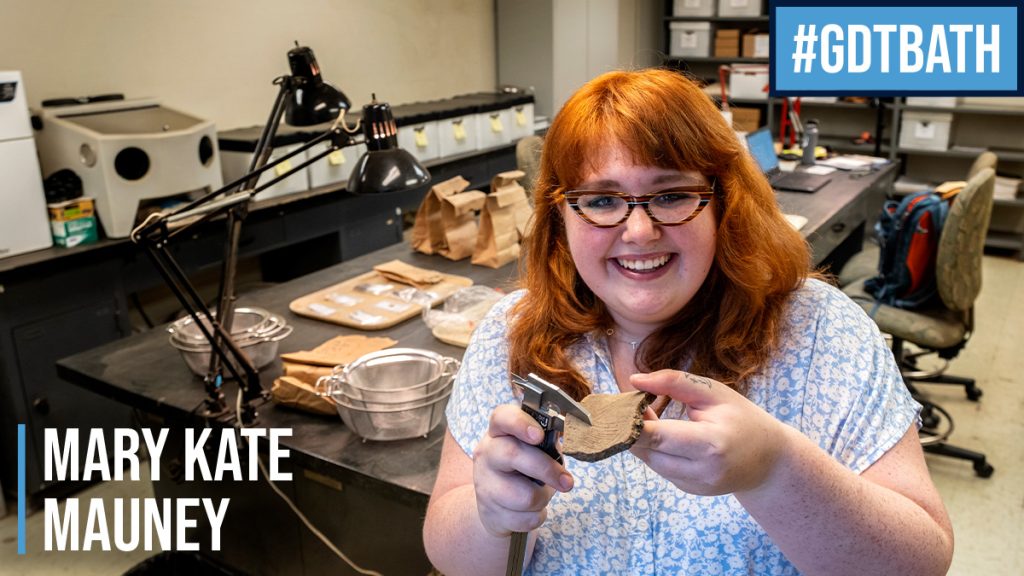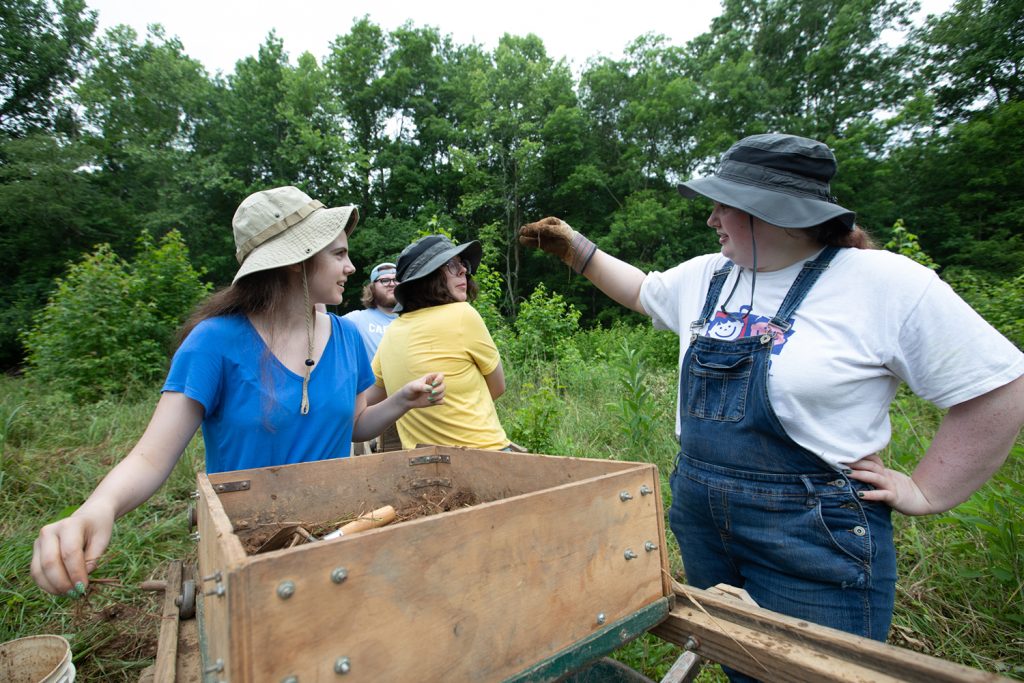
During this summer’s archaeology field school through the College of Arts and Sciences Curriculum in Archaeology, rising senior Mary Kate Mauney has the opportunity to practice what she wants to spend the rest of her life doing: uncovering pieces of life from the 1600s.
“I’m an archaeology major, and I want to work in the field one day, so this is a good way for me to learn skills I’ll use in the future,” Mauney says. “I’m also interested in the early contact period and North Carolina specifically, so this field school aligns with my research interests.”
The Research Laboratories of Archaeology has organized a summer field school for Carolina students every year since the 1980s, giving generations of aspiring archaeologists the opportunity to excavate sites in North Carolina.
Mauney and her cohort excavated two sites this summer – one in Duke Forest and another on the grounds of Ayr Mount, a plantation house built in 1815 in Hillsborough.
Under the guidance of Heather Lapham, the RLA’s research archaeologist and adjunct associate professor of anthropology and archaeology, and now-retired RLA Associate Director and Adjunct Professor of anthropology and archaeology Steve Davis, the students searched for evidence of indigenous settlements at both field sites.

“I’ve always loved history, but I didn’t want to sit inside all day, and I like to collaborate with others,” Mauney says. “Plus, archaeology is like detective work – you have to investigate and research where to start a dig site and then interpret what you find.”
At the Ayr Mount site, Mauney and the other students plotted points every 10 meters north, south, east and west and dug test pits until they found something of interest – evidence of burnt clay and charcoal, a clue that there was once human activity on the spot. They then dug up thin layers of dirt in a square excavation unit and ran each shovel full through a mesh screen to find artifacts. Everything larger than a quarter-inch stayed on the screen, and they placed the artifacts in labeled bags to be taken back to the lab to be washed and then studied.
Using a similar method in Duke Forest, the group uncovered pottery sherds, projectile points and Mauney’s favorite find of the summer – a piece of a clay pipe bowl.
“I like finding things I can visualize someone using hundreds of years ago,” Mauney says. “Someone held and traveled with this pipe until it was lost or broken. I know this isn’t surprising, but it’s always exciting to find an artifact and know that you’re on the right track and can begin to fit pieces of the puzzle together.”
Mauney equates going into the field and finding artifacts to reading a recipe versus making a meal – it’s one thing to sit in the library and read a journal article about an excavation, but until she went into the field and practiced it herself, she didn’t fully understand how all the pieces came together.

Mauney holds a pottery sherd, stone projectile point and part of a pipe bowl found at the Duke Forest and Ayr Mount field sites this summer. (Jon Gardiner/UNC-Chapel Hill)
“My advice to any undergraduate is to start volunteering, interning and getting hands-on experience as soon as possible, just like these field school students,” Lapham says. “Those experiences and relationships are so essential to moving forward in any field, but especially archaeology.”
This summer marked Mauney’s second trip into the field, and she already has her eye on a location she’d like to study in graduate school: a historic site in Alamance County that received renewed interest from the public due to a television series.
“Alamance Battleground was the site of a battle between the Regulators and the royal colonial government in 1771, but many people learned about it through the book and television series Outlander,” says Mauney. “It’s an incredibly interesting site, and it’s never been excavated, so that’s my dream site as an aspiring archaeologist.”
Lapham has no doubts that Mauney will achieve that goal one day.
“Mary Kate is a junior but already has so much experience in the field. She’s smart, enthusiastic, dedicated, and a joy to work with. Being part of this year’s field school is just building upon her knowledge and preparing her for a great career as an archeologist,” says Lapham.
By Madeline Pace, University Communications
Learn more about the archaeology field school at Endeavors.UNC.edu
